Excerpt
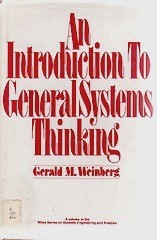 The complete substitution of theory for observation is, of course, not scientific. Even worse is going through the motions of observing, but discarding as ‘spurious’ every observation that does not fit theory — like the Viennese ladies who weigh themselves before entering Demel’s Tea Room. If they’re down a kilo, they have an extra mochatorte, and if they’re up a kilo they pronounce the scale ‘in error’ and have an extra mochatorte anyway.
The complete substitution of theory for observation is, of course, not scientific. Even worse is going through the motions of observing, but discarding as ‘spurious’ every observation that does not fit theory — like the Viennese ladies who weigh themselves before entering Demel’s Tea Room. If they’re down a kilo, they have an extra mochatorte, and if they’re up a kilo they pronounce the scale ‘in error’ and have an extra mochatorte anyway.
This, then, is the problem. Raw, detailed observation of the world is just too rich a diet for science. No two situations are exactly alike unless we make them so. Every license plate we see is a miracle. Every human being born is a much greater miracle, being a genetic combination which has less than 1 chance in 10100 of existing among all possible genetic combinations. Yet the same is true for any particular state — in the superobserver sense — of any complex system.
‘A state is a situation which can be recognized if it occurs again.’ But no state will ever occur again if we don’t lump many states into one ‘state.’ Thus, in order to learn at all, we must forego some potential discrimination of states, some possibility of learning everything. Or, codified as The Lump Law:
If we want to learn anything, we musn’t try to learn everything.
Examples? Wherever we turn they are at hand. We have a category of things called ‘books’ and another called ‘stepladders.’ If we could not tell one from the other, we would waste a lot of time in libraries. But suppose we want a book off the top shelf and no stepladder is at hand. If we can relax our lumping a bit, we may think to stack up some books and stand on them. When psychologists try this problem on people, some take hours to figure out how to get the book, and some never do.
It’s the same in any field of study. If psychologists saw every white rat as a miracle, there would be no psychology. If historians saw every war as a miracle, there would be no history. And if theologians saw every miracle as a miracle, there would be no religion, because every miracle belongs to the set of all miracles, and thus is not entirely unique.
Science does not, and cannot, deal with miracles. Science deals only with repetitive events. Each science has to have characteristic ways of lumping the states of the systems it observes, in order to generate repetition. How does it lump? Not in arbitrary ways, but in ways determined by its past experience — ways that ‘work’ for that science. Gradually, as the science matures, the ‘brain’ is traded for the ‘eye,’ until it becomes almost impossible to break a scientific paradigm (a traditional way of lumping) with mere empirical observations.
Editor’s Comments
This is the most mind-opening book I have never read. Never read, that is, from beginning to end, as I have every other book I’ve featured so far.
I first came across this book while browsing through the stacks of the engineering library at my graduate school. Even though An Introduction to General Systems Thinking has plenty of equations, graphs, and diagrams, it stood in dramatic contrast to all the other volumes, wholly and humorlessly technical in content. In just the first few moments of thumbing through its pages, I could see that this was an attempt to step away from the entire range of scientific and technological endeavors and ask, “What’s going on here?” As most of my waking hours at the time were devoted to such endeavors — physics, orbital mechanics, statistics, and linear programming — the book had the effect of someone opening up the window in an grim, airless cell. I couldn’t escape the need to stick with the curriculum, but at least, with Weinberg’s help, I could put it all in some kind of perspective.
When one gets deep into a particular scientific or engineering subject, the depth and breadth of details, theories, and methods can easily come to fill one’s whole field of vision. The discipline becomes the way we approach a great range of problems. However, we also quickly learn to define away any of the problems that fall outside the means of the discipline to solve. “But what,” ask Weinberg, “of the problems that refuse to be avoided? What of the depletion of our natural resources by an ever-increasing population in an ever-more-wasteful economy? … What of grisly wars and impoverished peace? What of death, and what of me, dying?”
“Such problems,” he continues, “fall outside any discipline.” An Introduction to General Systems Thinking, is, fundamentally, an attempt “to teach an approach to thinking when the labels are missing, or misleading.” Weinberg takes the basic principles of General SystemsTheory, as introduced by Ludwig von Bertalanffy in the 1930s and then developed by Kenneth Boulding and others, and shows how they can be applied, in various ways, … well, not exactly to solve such problems, but at least to recognize and understand them. He doesn’t presume to have all the answers: “…[D]o not take this book too seriously,” Weinberg warns his readers. “It is not a bible, nor a proof, nor even a cohesive argument. It is, indeed, my first few thoughts, a collection of hints, nudges, pushes, and sometimes shoves, which aim to assist your first few thoughts on any ‘systems’ problem.”
In mapping out his territory, Weinberg early on divides (and, as he notes repeatedly in the book, any act of dividing things up has inherent dangers) the space of problems into three regions:
- “Organized simplicity” — the region of mechanical laws
- “Unorganized complexity” — the region of sufficient diversity or randomness for statistics to be reliable
- “Organized complexity” — the region “too compex for analysis and too organized for statistics”
For problems that fall into this last space, he argues, “there is an essential failure of the two classical methods.” Weinberg is not opposed to the use of scientific methods. “Science, too, is a most useful tool — probably the most useful tool that man has ever discovered,” he writes. But we are continually stymied in our attempts to tackle problems where the simplifying tools of mechanics or statistics don’t seem to work. And, unfortunately, we have a tendency to persist in hammering away at the coalface with these tools even when they don’t work.
Weinberg compares the situation to the story of the boy who said, “Today, we learned how to spell ‘banana,’ but we didn’t know when to stop.” Or, as he elevates the idea into the Banana Principle,
Heuristic devices don’t tell you when to stop.
Take, as Weinberg does, the example of the two classic approaches to understanding a system: the black box and the white box. On the one hand, in the black box approach, we run the risk of not understanding the limitations of our tools for observing (e.g., the uncertainty principle in quantum physics) or of the act of observing on the black box (e.g., the Hawthorne effect in social sciences). On the other, with the white box approach, he writes, “because of our own limitations, no box is ever entirely revealed to us, even if we construct it ourselves.”
Understanding the limitations of our tools is a recurring theme in An Introduction to General Systems Thinking. As in the excerpt above, Weinberg stresses that any scientific tool must have a simplifying effect to have any value. Awareness of a tool’s limitations does not undermine its value, however — or, as he proposes in the Count-to-Three Principle,
If you cannot think of three ways of abusing a tool, you do not understand how to use it.
Weinberg compares scientific methods to a handyman’s box of tools. It’s been highly effective at solving many problems in the first two regions. What lies in the third region might be “situations in which present scientific methods could work, but have not, either because they have never been tried or because they have been tried without proper imagination and understanding.” But it’s also possible that there are situations where we’re unlikely to stumble across the breakthrough that pulls the problem into a space where our tools can solve them completely or effectively, at least anytime soon.
One of Weinberg’s strongest messages in the book is the importance of recognizing when problems don’t respond to known methods and approaches. Or, as he puts it, “[A]fter we have been fishing in a small pond for a while, most of the easy fish will have been caught — and it may be time to change bait.” Because we are human, we resist change. We stick with what’s worked in the past even when it doesn’t seem to be working. Only extreme frustration, disaster, or some other crisis, forces us to step back and rethink what we’re doing. Weinberg calls this the Used Car Law:
- A way of looking at the world that is not putting excessive stress on an observer need not be changed.
- A way of looking at the world may be changed to reduce the stress on an observer.
“In other words,” he writes, “why do we continue pumping gas into certain antique ways of looking at the world, why do we sometimes expend mammoth efforts to repair them, and why do we sometimes trade them in?”
Such questions are one of the great delights of An Introduction to General Systems Thinking. At the end of each chapter, Weinberg offers a set of “Questions for Further Research.” Questions such as:
- Tagore said, “By plucking her petals you do not gather the beauty of the flower.” Many poets are similarly renowned for their celebration of wholeness and complexity. Choose a particular poet and several representative works to discuss in light of the Law of Medium Numbers [“For medium number systems {i.e., those that fall in the third region–Ed.}, we can expect that large fluctuations, irregularities, and discrepancy with any theory will occur more or less regularly.”].
- The French Academy is reputed to have debated for 40 years over whether it was “le voiture” or “la voiture. How does an English speaker learn the sex of a feather? How does a French child learn the same thing? How does the French Academy know the sex of automobiles?
- Go out into a large open field — if you can still find one — lie on your back, and gaze up at the clouds for an hour or so. Make notes of the figures you see there, and later analyze those notes to see if you can detect the influences that have shaped your vision.
Like most of the questions in the book, these are open-ended. An Introduction to General Systems Thinking is that rare book where the questions outnumber the answers. Go to just about any page, and you will find some question that can lead you to hours or days of thinking. Which is one of the reasons I’ve never succeeded in reading it from start to finish. For me at least, doing that would require me to set aside some great eye-opening question in favor to pressing relentlessly on, which seems contrary to Weinberg’s whole point. “All general systems thinking,” he writes, starts with one of three questions:
- Why do I see what I see?
- Why do things stay the same?
- Why do things change?
Of our grappling with these questions, Weinberg says,
…[W]e can never hope to find the end; we do not intend to try. Our goal is to improve our thinking, not to solve the riddle of the Sphynx.
Which is also why I’ve found myself returning to An Introduction to General Systems Thinking again and again in the twenty-plus years since I first stumbled across it. I know no better spark to revive a mind that’s stuck in dead-end thinking than to open this book, dive into one of Gerald Weinberg’s wonderful open-ended questions, and rediscover how one looks at the world.
An Introduction to General Systems Thinking was out of print for years after its first publication by John Wiley & Sons in 1975, but in 2001, Dorset House reissued the book in a silver anniversary edition, with a new preface by Weinberg.
Other Comments
- · John Richards, CSQE Body of Knowledge areas: General, Knowledge, Conduct, and Ethics (on the silver anniversary edition)
- As one can tell from the title, this is not a new book – it is a classic. The author worked on the original from 1961 to 1975. He begins the preface to this silver anniversary edition with a quote from Albert Einstein: “The significant problems we face cannot be solved at the same level of thinking we were at when we created them.”
This book is about thinking. It is about how humans organize, synthesize, and put order to their universe….
It is difficult to summarize the book’s broad chapters in a few sentences and even more difficult to give this book the credit it deserves in such a limited review. Suffice it to say this is one of the classics of systems or science of computing. I recommend it to all; it will cause both scientists and nonscientists to examine their world and their thinking. This book will appear on my reading table at regular intervals, and one day I hope to update to the golden anniversary edition.
- · Charles Ashbacher, posted on Amazon.com
- . . . it is truly an extraordinary piece of work. . . . It is not about computing per se, but about how humans think about things and how ‘facts’ are relative to time, our personal experience and environmental context. . . .
….This is a book that is a true classic, not in computing but in the broad area of scholarship. It is partly about the philosophy and mechanisms of science; partly about designing things so they work but mostly it is about how humans view the world and create things that match that view. This book will still be worth reading for a long time to come and it is on my list of top ten computing books of the year.
Find Out More
Locate a Copy
An Introduction to General Systems Thinking, Gerald M. Weinberg
New York: John Wiley & Sons, 1975
New York: Dorset House Publishing, 2001

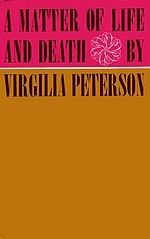
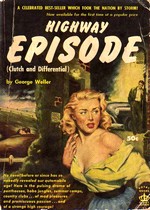 George Weller’s
George Weller’s  His first act after inheriting his uncle’s fortune was a definite indication that he had renounced social glory. He sold the great house in the country which contained so many treasures, and ignored all the social responsibilities of his position. Doubtless this offended a number of people very much. A man is expected to do exactly what the herd does of which he is a member. If you belong to a family whose supreme pleasure is hunting, you are expected to hunt — and to evince a delirious passion for that activity. If you don’t, there’s something wrong with you. And not only that. Your refusal is regarded by the members of your family as a criticism of them. It’s no good saying you don’t hunt because you don’t like it, for the interpretation given to that statement is that you mean that they ought not to like it. If you persist in your refusal, it is either assumed that you have a secret vice, or that you are a Bolshevik in close touch with Moscow. Argument is useless. Either you must adhere to your refusal and accept ignominy, or you must leap on t a horse and pursue a tiny and terrified animal in company with other sportsmen.
His first act after inheriting his uncle’s fortune was a definite indication that he had renounced social glory. He sold the great house in the country which contained so many treasures, and ignored all the social responsibilities of his position. Doubtless this offended a number of people very much. A man is expected to do exactly what the herd does of which he is a member. If you belong to a family whose supreme pleasure is hunting, you are expected to hunt — and to evince a delirious passion for that activity. If you don’t, there’s something wrong with you. And not only that. Your refusal is regarded by the members of your family as a criticism of them. It’s no good saying you don’t hunt because you don’t like it, for the interpretation given to that statement is that you mean that they ought not to like it. If you persist in your refusal, it is either assumed that you have a secret vice, or that you are a Bolshevik in close touch with Moscow. Argument is useless. Either you must adhere to your refusal and accept ignominy, or you must leap on t a horse and pursue a tiny and terrified animal in company with other sportsmen. “If the Ministry of Truth had devoted their full attention to obliterating the memory of Harry Sylvester, his elimination from the public consciousness could not have been more total,” writes Jenkins in this profile of a neglected American novelist. Of Sylvester’s three novels on Catholic themes, his three Catholic novels,
“If the Ministry of Truth had devoted their full attention to obliterating the memory of Harry Sylvester, his elimination from the public consciousness could not have been more total,” writes Jenkins in this profile of a neglected American novelist. Of Sylvester’s three novels on Catholic themes, his three Catholic novels, 
 The problem with the Twenties, as Paterson characterizes it, was not a matter of “doing what you pleased” but doing what everyone else was doing, and doing it thoughtlessly. Despite her deeply individualistic view of life, she admires the Victorians for the effort they put into maintaining their structured morality: “Respectability is a genuine accomplishment,” Mysie says at one point, and of all the characters in
The problem with the Twenties, as Paterson characterizes it, was not a matter of “doing what you pleased” but doing what everyone else was doing, and doing it thoughtlessly. Despite her deeply individualistic view of life, she admires the Victorians for the effort they put into maintaining their structured morality: “Respectability is a genuine accomplishment,” Mysie says at one point, and of all the characters in 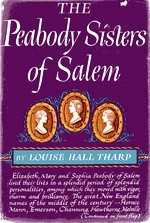 Louise Tharp Hall first celebrated the remarkable sisters in her 1950 collective biography,
Louise Tharp Hall first celebrated the remarkable sisters in her 1950 collective biography, 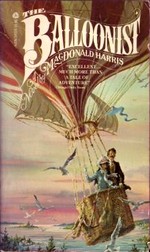 Their responses show that undervalue, like value, is very much in the eye of the beholder. Given the wealth of academic attention paid to Flannery O’Connor’s work and the fact that
Their responses show that undervalue, like value, is very much in the eye of the beholder. Given the wealth of academic attention paid to Flannery O’Connor’s work and the fact that  The complete substitution of theory for observation is, of course, not scientific. Even worse is going through the motions of observing, but discarding as ‘spurious’ every observation that does not fit theory — like the Viennese ladies who weigh themselves before entering Demel’s Tea Room. If they’re down a kilo, they have an extra mochatorte, and if they’re up a kilo they pronounce the scale ‘in error’ and have an extra mochatorte anyway.
The complete substitution of theory for observation is, of course, not scientific. Even worse is going through the motions of observing, but discarding as ‘spurious’ every observation that does not fit theory — like the Viennese ladies who weigh themselves before entering Demel’s Tea Room. If they’re down a kilo, they have an extra mochatorte, and if they’re up a kilo they pronounce the scale ‘in error’ and have an extra mochatorte anyway.